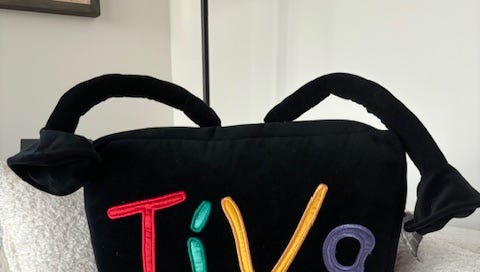If you don’t have product market fit, then all of the marketing dollars and campaigns in the world aren’t going to save your company or help you scale.
The thing about product market fit (PMF) is that it needs to be re-evaluated constantly. Just because your product solved a problem six years ago, doesn’t mean people still care about that problem today.
Case in point: TiVo, the original DVR company that revolutionized the way people watched television back in 1997-2007, had product market fit for people who wanted to record their favorite shows, pause live television, skip commercials, and get recommendations automatically. TiVo went on to create a ton of features around music and apps like Facebook. But it failed to recognize the future. In 2007 Netflix changed the game and now we binge watch or stream our favorite shows, no longer tethered to a network’s schedule.
Full disclaimer, I worked at TiVo for almost 10 years (2000-2009) and I loved working there. It was one of the funnest places I’ve ever worked — and I don’t even like television all that much. I worked for a short period in customer success, then mostly in operations running service operations, partnerships, project management, and data analysis. I wasn’t on the marketing team, although I did help launch both the TiVo Rewards and TiVo Gift Giving marketing programs.
But unfortunately, TiVo is looked at as a failed product by many, even though it still exists for over the air antenna (OTA) users under Rovi, who acquired them in 2016 and then renamed themselves to TiVo Corporation because the brand was so strong.
Many folks attribute TiVo’s failure to their marketing, but I wouldn’t say that was the reason. For one, the marketing team had plenty of dollars and created a ton of campaigns around getting TiVo’s brand known in the marketplace, and capitalized on influencer marketing before influencer marketing was even a thing, including placements on Oprah, Ellen, Friends, in Emmy gift baskets, celebrity endorsements, and so many other places. Everybody wanted a TiVo. Everybody loved the mascot. Everybody understood and loved the basics - of pausing live television and skipping commercials.
For the first 5-7 years of TiVo’s existence, they were crushing it. But one thing that first contributed to their downfall of acquiring marketshare was the stall of dual tuner on cable boxes.
We launched the dual tuner (being able to record two shows at once) on DirecTV. I remember being so proud to see that box on a shelf in Best Buy thinking I helped put this there. But it took us another four years to launch dual tuner on cable and it came with caveats. In fact, instead of going right into launching dual tuner on cable boxes, we released features that no one cared about instead, like TiVo Music. It’s as if TiVo lost sight of it’s vision to revolutionize the way people consume television.
During the majority of my tenure (2004-2011) we were in the midst of a patent infringement lawsuit with EchoStar/DishNetwork for stealing our patent. They basically acted like they wanted to be partners with us, held onto the box for over a month, where they took it apart, figured out how to rebuild it and then broke the partnership and came out with their own dual tuner box for DishNetwork. TiVo won that patent infringement case after seven years of litigation and EchoStar paid them $500,000,000 in licensing fees (that’s not a typo, $500M). But the lawsuit significantly impacted their growth.
Every company has failures, but where TiVo went wrong was they failed to re-examine if they still had product market fit. No one cared about the new features. People only cared about pausing live television and skipping commercials. They literally revolutionized the way we all watched television back then. Had they re-examined the market, perhaps they would have pivoted like Netflix had, to online streaming. After all, they had the capabilities and the marketing chops to do it.
Netflix was on the cutting edge of consumer trends and when they announced they were getting rid of DVDs, everyone was baffled. If you look at Netflix today, they went from being a $500M revenue company mailing DVDs and solving the Blockbuster problem to becoming an award winning television network and streaming service with $9.37B in revenue. That’s what you call pivoting to consumer needs and re-evaluating product market fit. And when people didn’t want to stream their content on Netflix, they pivoted again and produced their own content winning 112 Primetime Emmy awards and 23 Oscars to date.
Pivot. Pivot. Pivot.
I’ve worked for many brands over the years who have failed to re-evaluate PMF. It’s a costly mistake as you’ll see why in my next post next week. Until then…



